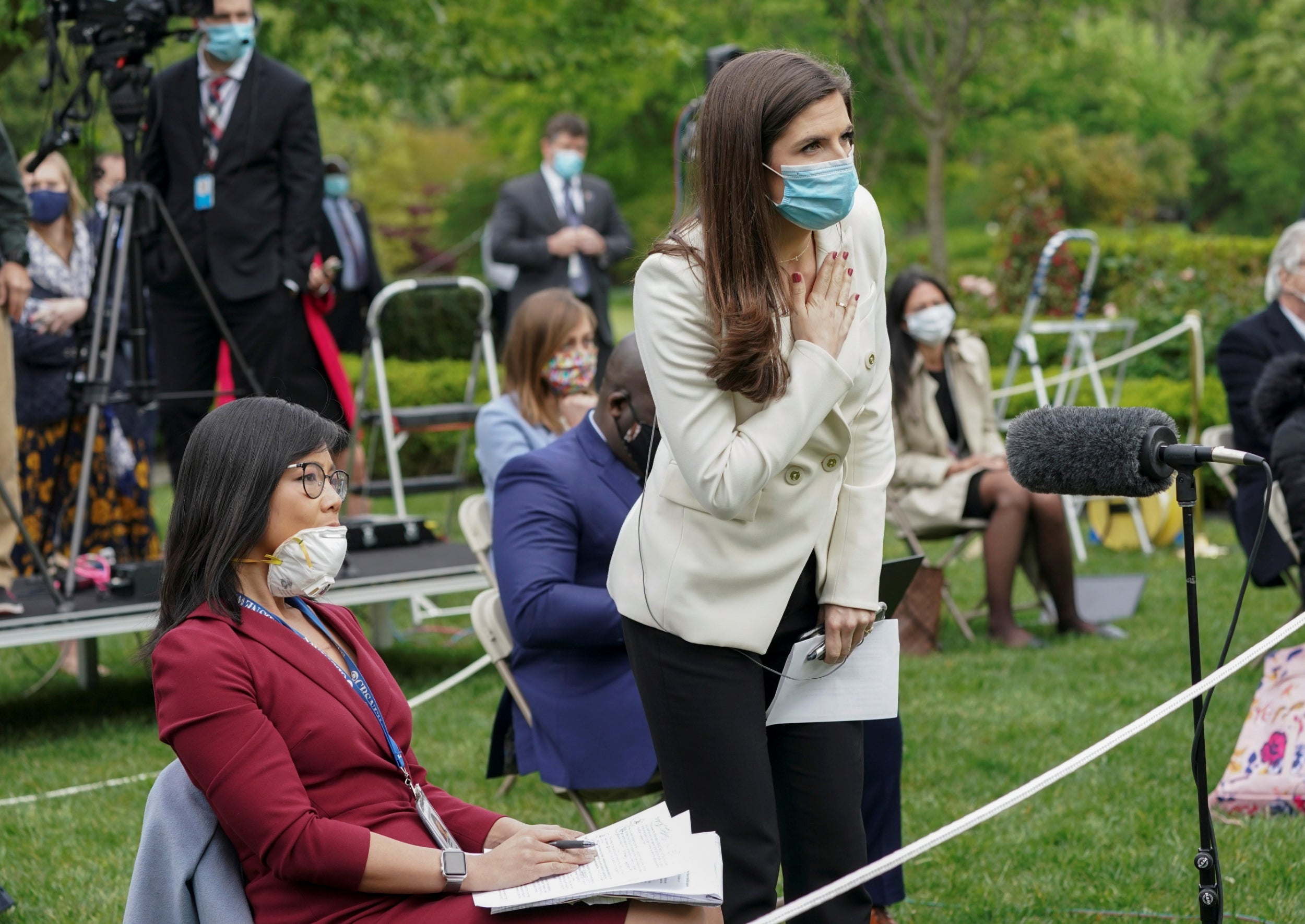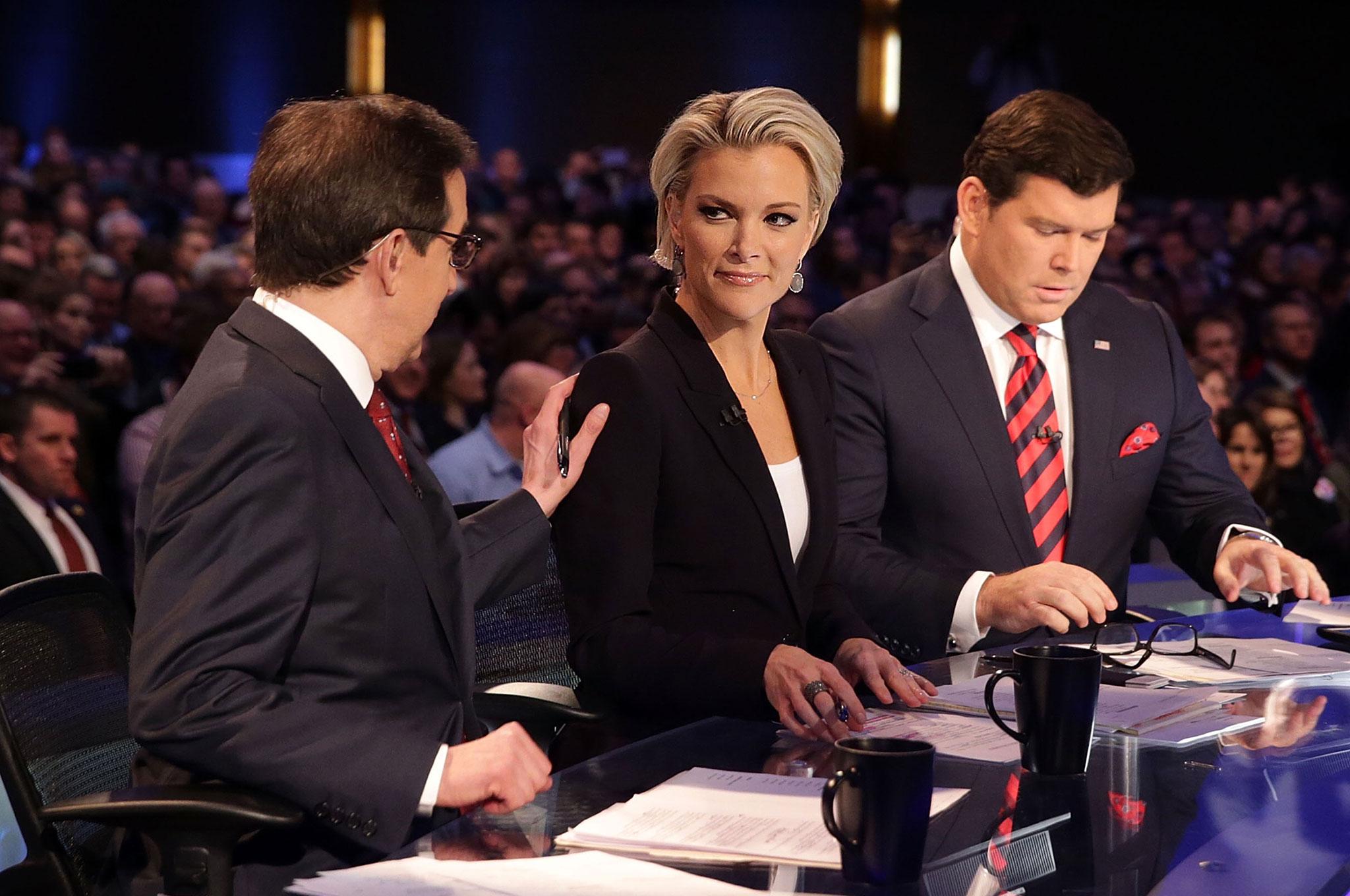The tumultuous history of Donald Trump and female reporters
The president continually attacks what he calls the 'fake news media' but saves some of his most vicious attacks for women, and often women of colour
Your support helps us to tell the story
From reproductive rights to climate change to Big Tech, The Independent is on the ground when the story is developing. Whether it's investigating the financials of Elon Musk's pro-Trump PAC or producing our latest documentary, 'The A Word', which shines a light on the American women fighting for reproductive rights, we know how important it is to parse out the facts from the messaging.
At such a critical moment in US history, we need reporters on the ground. Your donation allows us to keep sending journalists to speak to both sides of the story.
The Independent is trusted by Americans across the entire political spectrum. And unlike many other quality news outlets, we choose not to lock Americans out of our reporting and analysis with paywalls. We believe quality journalism should be available to everyone, paid for by those who can afford it.
Your support makes all the difference.Donald Trump’s clashes with media outlets and journalists are one consistent interaction people have grown to expect from his presidency.
He coined phrases like “Fake News” for his supporters, and the more positive encouragement he received from those phrases, the more he heightened the attacks.
Press briefings have brought this behaviour to the forefront for the public, with the president often reacting negatively and even turning to personal attacks when questioned by reporters.
But in recent months, the daily coronavirus press briefings further brought to centre stage the way Mr Trump will treat the press when they challenge his administration, specifically his treatment towards female journalists and women of colour.
A press briefing held in the White House’s Rose Garden involved an interaction with CBS News’ Weijia Jiang, a Chinese-American journalist, where the president told her to ask China instead of her own country about its reaction to the coronavirus.
“Sir, why are you saying that to me specifically? That I should ask China?” she challenged the president. He went on to call her question “nasty” before moving on to another reporter.
CNN’s Kaitlan Collins was next up to ask the president a question. But he instead tried to stop her asking him one and attempted to move on to someone else. After she pressed him, he abruptly ended the press briefing.

Other interactions between the president and Ms Jiang involved the president telling her to “keep your voice down” and take it “nice and easy” with her questioning.
Professor Ava Thompson Greenwell, Ph.D, with Northwestern’s Medill School of Journalism told The Independent these interactions between the president and reporters could be characterised not as micro-aggressions, but micro-assaults.
“What he does is what we would call a micro-assault. It’s not subtle at all. It’s direct, it’s in your face, it’s a tongue lashing, it’s meant to cause harm. And that’s the definition of a micro-assault,” she said.
Mr Trump’s defence for interacting with the news media in the way that he does is because they are “phonies” or asking him “nasty questions”. But dealing with the news media is what comes with being the leader of the United States, with the constitution guaranteeing the freedom of the press in the First Amendment.
‘There was blood coming out of her eyes, blood coming out of her wherever’
Past presidents and people in power have experienced their own scuffles with difficult questions from the press, but Mr Trump takes his attacks one step further by belittling and attacking the reporter personally.
PBS’ Yamiche Alcindor, a black woman, was targeted personally during a coronavirus press briefing for being “threatening” with her line of questioning.
“That’s why you used to work for the Times and now you work for someone else,” Mr Trump said while avoiding the question. “Be nice, don’t be threatening.”
“It shouldn’t be personal. It should always be about the product but not about the person,” Ms Thompson Greenwell said. “Saying someone doesn’t know what they’re doing is really taking a stab at the individual ... Why focus on the person? You focus on the product.”
“I don’t think any of these journalists need to be targeted personally. It is not legitimate to focus on that reporter’s personality and who they are as an individual,” she added.
Attacks on female journalists started as early as when Mr Trump was first running for the presidency. A clash with Megyn Kelly, who worked for Fox News at the time, became one of his first viral spars with a female journalist when he was just months into his campaign.
Ms Kelly opened the Republican Party presidential debate in August 2015 by reading out the instances that the now-president has publicly belittled and demeaned women by calling them “fat pigs”, “slobs”, and “dogs”.
The president was ready for this line of questioning, though, and responded quickly by making a joke about comedian Rosie O’Donnell, who he had publicly attacked multiple times on Twitter.
“For the record, it was well beyond Rosie O’Donnell,” Ms Kelly said over the roars of audience laughter. “Does that sound to you like the temperament of a man we should elect as president?”
He responded: “What I say is what I say.”
The days following showed the error Ms Kelly made in the eyes of Mr Trump by choosing to challenge him on how he spoke about women. He went on multiple cable network shows to discuss the news host, even appearing to reference at one point menstruation in an effort to discredit her line of questioning.

“There was blood coming out of her eyes, blood coming out of her wherever,” he told CNN.
In an interview with Fox News, Mr Trump added: “I have zero respect for Megyn Kelly. I don’t think she is very good at what she does. She’s highly overrated.”
Tweets he issued against Ms Kelly also said she “bombed” during the debate.
Commenting on a female journalist’s appearances, referencing menstruation, and making other personality statements when choosing to attack them for doing their job all show misogynistic tendencies, Elisa Lees Munoz, the Executive Director of the International Women’s Media Foundation, told The Independent.
“We know that he does not discriminate on gender with regards to his criticism and his attacks, but we have particularly noticed the way that he attacks female journalists and it is a very gendered attack, which really demonstrates some misogynistic tendencies that we see online and in the streets every day,” she said.
The purpose of these attacks for Mr Trump?
“It is really designed to shut them up, to try to get them to stop working, to belittle, to humiliate,” Ms Munoz added.
‘Be nice, don’t be threatening’
The president doesn’t just focus his attacks on females. Male White House correspondents and political reporters also experience insults and attacks to their credibility when challenging the president.
Attacks against female correspondents tend to stand out more, though, as historically the White House press corps has been largely filled with white men.
“He goes after journalists and he goes after them hard. When he goes after black women because their numbers are so few, it just stands out more,” Ms Greenwell Thompson said.
November 2018 showed multiple instances where the president had words with three different black journalists: CNN’s Abby Phillip, CNN’s April Ryan, and Ms Alcindor.
In that period, the president slammed Ms Phillip for her “stupid question”, called Ms Ryan a “loser” who doesn’t know “what the hell she’s doing”, and accused Ms Alcindor of asking a “racist question”.
“That just really stood out for me because you had three black women and it felt like every week he had a tongue lashing for them,” Ms Thompson Greenwell said.
After Mr Trump called Ms Phillip’s question “stupid”, she appeared on CNN to discuss the treatment and what she’s noticed from the president’s interactions with female reporters since the start of his presidency.
“It’s part of a pattern and it is a really clear pattern that’s been going on for years now,” Ms Phillip said. “He seems to not be tolerant of taking difficult questions, particularly from women ... The president making assumptions about reporters based on their ethnicity is a pattern here.”
Critics, including the president, have argued journalists deserve Mr Trump’s treatment towards them because they sometimes present a bias in their questioning or the administration disagrees with a story. At the time of publication the White House has not commented on Mr Trump’s interactions with female journalists when contacted by The Independent.
“If President Trump spoke more about policy, initiatives, activities, if he responded to questions in a professional manner, then he would be more respected by the press,” Ms Munoz said.
She added the president should “add some intellectual response and have a professional exchange” when disagreeing with the press as opposed to the personalised attacks.
Concern has risen that the rhetoric against journalists, specifically female journalists or those representing minority communities, could push people away from remaining in or joining the career field.
The International Women’s Media Foundation released a report that surveyed 597 female journalists and media workers in 2018. The report found that nearly two-thirds of respondents reported online abuse, harassment, or threatening behaviour. Of those people, 40 per cent said they avoided reporting certain stories out of fear of abuse.
Nearly one-third of women surveyed also considered leaving the profession due to instances of harassment and online abuse.
As a professor of journalism, Ms Thompson Greenwell said she was concerned attacks against the free press could inhibit potential journalists from entering the field.
“My real concern for students regardless of their colour or gender is they will choose maybe not to go into this business, particularly not to cover politics and not to aspire to be White House correspondents,” she said. “That is a really elite group of journalists who are able to have an audience. My worry is that students who see this over and over again will just say, ‘I don’t want any part of that.’”
What the president fails to realise is that the free press was not created as a third arm to the presidency. Their job is not to boost his accomplishments and ignore any reports of failings.
He, like presidents before him, has no control over the press, as they work for US citizens to report on information relating to the administration.
“Journalism is really the watchdog of our society,” Ms Munoz said, “and if you are driving the press away from press freedom, if you are taking actions that inhibit the way the press operates ... we are not going to get the answers that we need to have a fully free democracy.”

Join our commenting forum
Join thought-provoking conversations, follow other Independent readers and see their replies
Comments